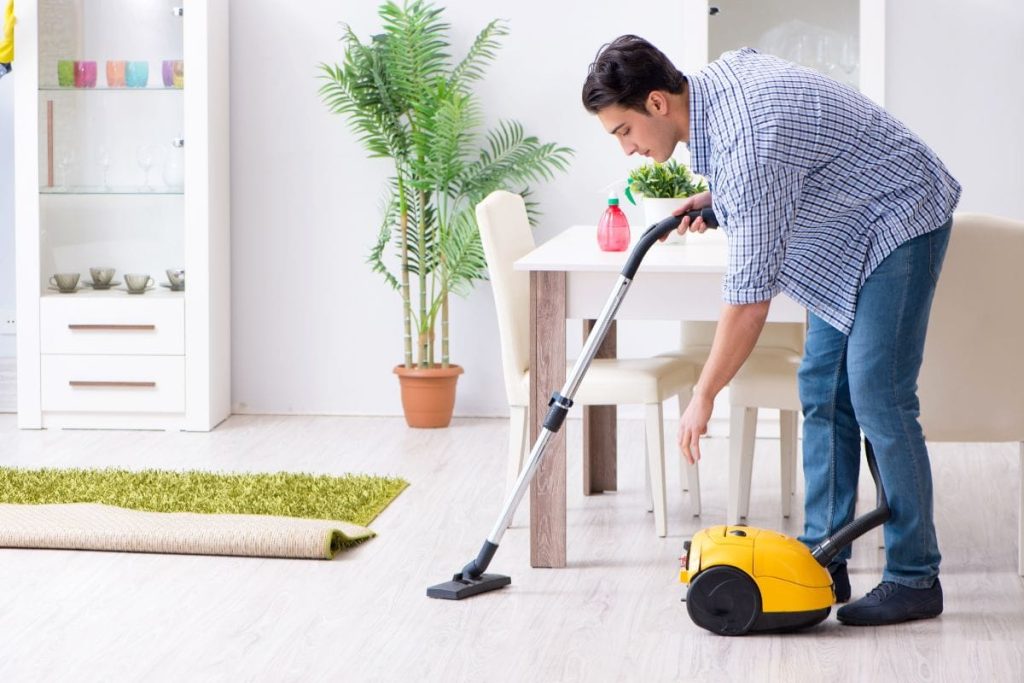Indoor allergens are invisible troublemakers that can turn your sanctuary into a source of constant discomfort, notes Keyrenter West Seattle experts. Unlike outdoor allergens that come and go with seasons, indoor allergens lurk year-round, building up in carpets, furniture, and fabrics where they multiply and circulate through your air.
The most common indoor allergens include dust mites, pet dander, mold spores, and pollen that hitchhikes inside on clothes and shoes. These microscopic particles are so small they become airborne with the slightest disturbance – walking across a carpet, sitting on a couch, or even opening a door can send them swirling through your air.
Dust mites are the primary culprits. These microscopic creatures feed on dead skin cells and thrive in warm, humid environments. A single gram of dust can contain up to 1,000 dust mites, and their waste products are potent allergens that trigger asthma and allergic reactions.
Pet dander isn’t just fur. Even hairless pets produce dander – tiny flakes of skin that become airborne and stick to surfaces throughout your home. Pet saliva and urine also contain allergenic proteins that can persist long after pets are gone.
Mold spores multiply in hidden places. Anywhere moisture accumulates – behind appliances, in bathroom corners, under sinks – becomes a breeding ground for mold. These spores become airborne and can trigger serious respiratory reactions.
Furniture and upholstery act as reservoirs for these allergens, trapping them deep in fibers where regular cleaning can’t reach. Professional deep cleaning services can remove embedded allergens that have accumulated over months or years. To understand more about professional allergen removal options, view details about specialized cleaning methods that target these hidden sources.
Pollen enters through multiple routes. Open windows, clothing, pets, and even air conditioning systems can introduce outdoor allergens into your indoor environment. Once inside, pollen settles into fabrics and carpets where it continues triggering reactions.
The Hidden Allergen Hotspots in Your Home
Most people focus on obvious places like carpets and bedding, but allergens accumulate in surprising locations throughout your home. Identifying these hidden hotspots is crucial for effective allergen control.
Upholstered furniture harbors more allergens than floors. Sofas, chairs, and cushions trap dust mites, pet dander, and other particles in their fibers and foam. The fabric acts like a filter, collecting airborne allergens every time someone sits down or gets up.
Curtains and window treatments are allergen magnets. They hang in air currents, collecting dust and pollen that gets redistributed every time they move. Heavy fabrics and pleated designs create more surface area for allergen accumulation.
Books and papers create dust and provide hiding places. Old books, magazines, and paper files shed particles and collect dust in hard-to-clean crevices. Home offices and libraries often have surprisingly high allergen levels.
Electronics and appliances circulate allergens. Computer fans, televisions, and heating systems move air around your home, stirring up settled allergens and distributing them to new locations.
Hidden hotspot checklist:
- Behind and under furniture where dust accumulates
- Inside closets where air circulation is poor
- Decorative items like throw pillows and blankets
- Pet bedding and favorite resting spots
- Basement and attic storage areas
- Inside air ducts and vents
Humidity creates perfect breeding conditions. Bathrooms, kitchens, and laundry rooms generate moisture that supports dust mite and mold growth. These areas need special attention in allergen control strategies.
Entryways track in outdoor allergens. Mud rooms, coat closets, and areas near doors collect pollen, dust, and other outdoor particles that get tracked throughout your home on shoes and clothing.
Simple Daily Strategies for Allergen Control
Effective allergen control doesn’t require expensive equipment or major lifestyle changes. Small, consistent actions can dramatically reduce your exposure to indoor allergens and improve your overall comfort.
Morning ventilation flushes out overnight accumulation. Open windows for 10-15 minutes each morning to exchange stale, allergen-laden air with fresh outdoor air. This simple habit removes allergens that build up while you sleep.
Humidity control prevents allergen multiplication. Keep indoor humidity between 30-50% to discourage dust mites and mold growth. Use exhaust fans while cooking and showering, and consider a dehumidifier in chronically damp areas.
Daily surface wiping removes settled allergens. Use damp cloths on hard surfaces to capture allergens instead of stirring them into the air. Dry dusting just redistributes particles without removing them.
Shoe removal prevents outdoor contamination. Establishing a shoes-off policy at entrances prevents tracking outdoor allergens throughout your home. Provide indoor slippers for family and guests.
Effective daily habits include:
- Making beds immediately – prevents dust mites from becoming airborne
- Running bathroom fans during and after showers – reduces moisture that supports allergen growth
- Wiping down kitchen counters after cooking – removes food particles that attract pests
- Putting away clean laundry immediately – prevents dust accumulation on fabrics
- Quick vacuum of high-traffic areas – removes daily allergen accumulation
Temperature control affects allergen levels. Dust mites thrive in temperatures above 70°F. Keeping your home slightly cooler can reduce their population significantly.
Pet grooming reduces dander circulation. Regular brushing and bathing of pets removes loose skin flakes before they become airborne. Designate pet-free zones, especially bedrooms, to create allergen-safe spaces.
Natural Methods to Purify Indoor Air
Chemical air fresheners and harsh cleaning products can actually worsen allergen problems by adding irritating substances to your air. Natural purification methods remove allergens without introducing new irritants.
Plants provide natural air filtration. NASA research identified specific plants that remove common indoor pollutants and allergens. Spider plants, peace lilies, and snake plants are particularly effective and easy to maintain.
The best allergen-fighting plants:
- Boston ferns (remove formaldehyde and allergens from air)
- Rubber plants (capture dust particles on their large leaves)
- Bamboo palms (natural humidifiers that reduce dust)
- English ivy (reduces airborne mold particles)
- Chrysanthemums (filter out common household toxins)
Salt lamps may reduce airborne particles. While scientific evidence is limited, many people report feeling better with Himalayan salt lamps, which may help reduce static electricity that keeps allergens airborne.
Essential oils provide antimicrobial benefits. Tea tree oil, eucalyptus, and lavender have natural properties that may help reduce mold and bacteria. Use in diffusers rather than synthetic air fresheners.
Baking soda neutralizes odors and absorbs moisture. Place open boxes in closets, near litter boxes, and in other areas where odors and humidity accumulate. Replace monthly for best results.
White vinegar cuts through allergen buildup. Mix with water for a natural cleaning solution that removes soap scum, mineral deposits, and organic buildup where allergens accumulate.
As cleaning expert Marie Kondo notes, “The objective of cleaning is not just to clean, but to feel happiness living within that environment.” Natural methods support both cleanliness and health without adding chemical irritants.
Seasonal Allergen Prevention Techniques
Different seasons bring unique allergen challenges. Adapting your strategies seasonally provides better protection than using the same methods year-round.
Spring pollen prevention starts before trees bloom. Clean or replace HVAC filters before pollen season begins. Consider upgrading to HEPA filters that capture smaller particles. Keep windows closed during high pollen days and use air conditioning for ventilation.
Summer humidity control becomes critical. Hot, humid weather creates perfect conditions for dust mites and mold. Increase ventilation, use dehumidifiers, and clean air conditioning units regularly to prevent mold growth in cooling systems.
Fall preparation for indoor time. As you close windows and increase indoor time, deep clean carpets, upholstery, and bedding. This removes accumulated allergens before spending more time indoors.
Winter dry air management. While low humidity reduces dust mites, extremely dry air can irritate respiratory systems. Balance humidity levels and increase cleaning frequency as heating systems circulate more air.
Seasonal deep cleaning priorities:
- Spring: Focus on windows, curtains, and air filtration systems
- Summer: Emphasize moisture control and mold prevention
- Fall: Deep clean fabrics and prepare for increased indoor time
- Winter: Maintain humidity balance and heating system cleanliness
Holiday allergen management. Decorations stored in attics or basements often carry dust and mold. Clean decorative items before displaying and store them properly to prevent future contamination.
Creating an Allergen-Free Sleep Environment
Sleep quality suffers dramatically when bedrooms are full of allergens. Creating a clean sleep environment is one of the most impactful changes you can make for allergy relief and overall health.
Bedding requires special attention. Wash sheets, pillowcases, and blankets weekly in water heated to at least 140°F to kill dust mites. Use allergen-proof covers on mattresses and pillows to create barriers against dust mites.
Bedroom air quality affects sleep and morning symptoms. Many people wake up congested not because they’re getting sick, but because they’ve been breathing allergen-laden air all night. Air purifiers in bedrooms can provide significant relief.
Minimize fabric surfaces in bedrooms. Heavy curtains, excessive throw pillows, and carpet create more surfaces for allergen accumulation. Opt for washable fabrics and hard flooring when possible.
Pet-free zones improve sleep quality. Even people who aren’t severely allergic to pets often sleep better when pets don’t share bedrooms. Pet dander and movement during sleep can disrupt rest quality.
Bedroom optimization checklist:
- Replace pillows every 1-2 years (they accumulate dead skin cells and dust mites)
- Vacuum mattresses monthly using upholstery attachments
- Keep humidity between 30-50% to discourage dust mite growth
- Use washable rugs instead of wall-to-wall carpeting
- Store clothing in closed closets rather than open areas
Morning routines affect daily allergen exposure. Making beds immediately traps dust mites in bedding instead of allowing them to become airborne. Opening windows briefly provides fresh air exchange.
Evening preparation supports better sleep. Shower before bed to remove pollen and other allergens from hair and skin. Change into clean sleepwear rather than clothes worn outdoors.
Benjamin Franklin wisely observed, “An ounce of prevention is worth a pound of cure.” This principle applies perfectly to allergen control – small, consistent prevention efforts are more effective than trying to treat severe allergic reactions after they occur.
Creating an allergen-reduced home environment isn’t about achieving perfection – it’s about making strategic improvements that significantly reduce your daily exposure. Focus on the areas where you spend the most time and the allergen sources that affect you most.
Start with one or two techniques that address your biggest concerns, whether that’s dust mites in bedding, pet dander in furniture, or mold in humid areas. Build your allergen control system gradually as these improvements become natural parts of your routine.
Remember: small changes in allergen control can create big improvements in daily comfort, sleep quality, and overall health. Your home should be a refuge from allergens, not a source of them.
Ready for more? Keep reading the blog for additional tips and inspiration!







